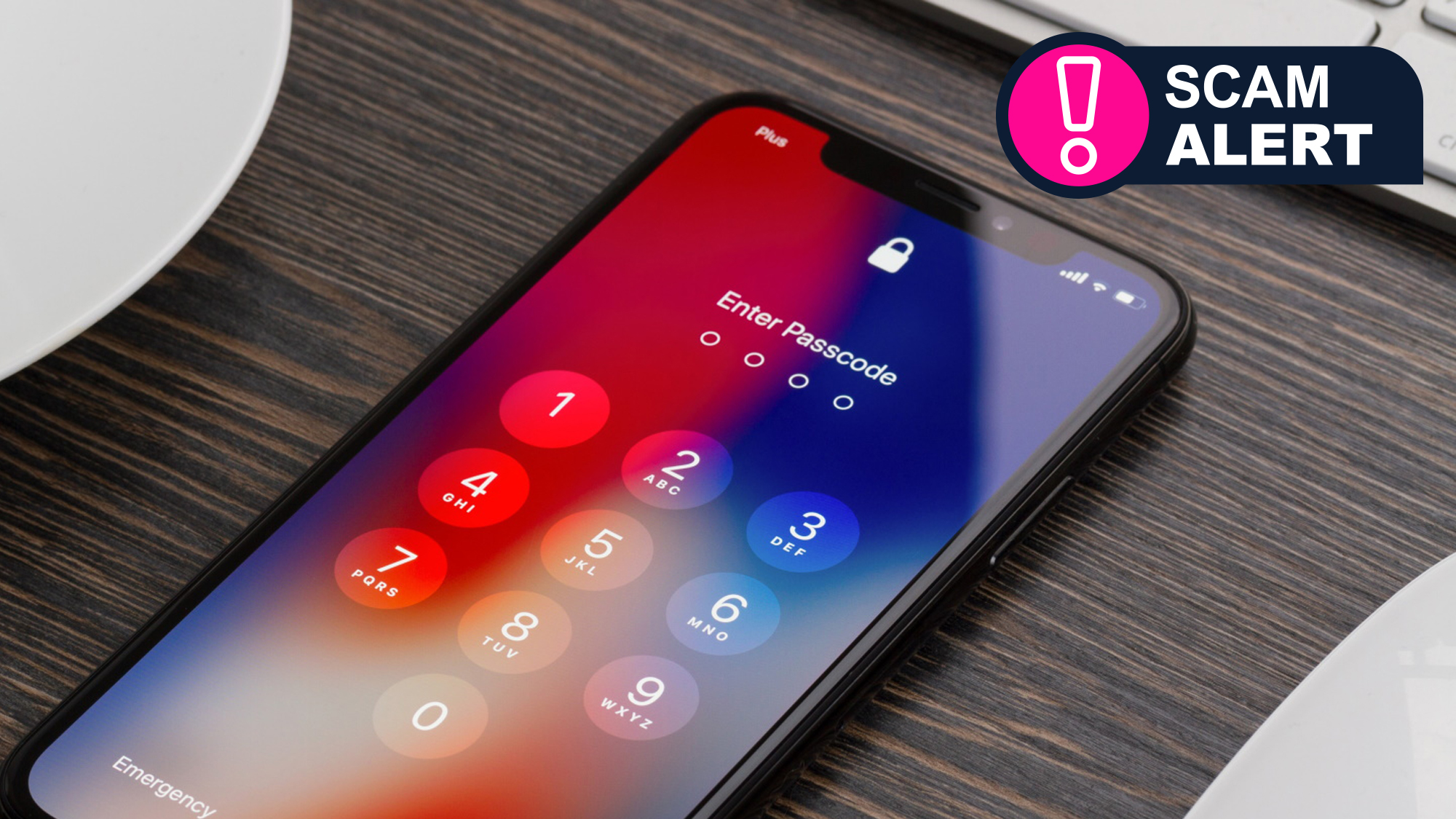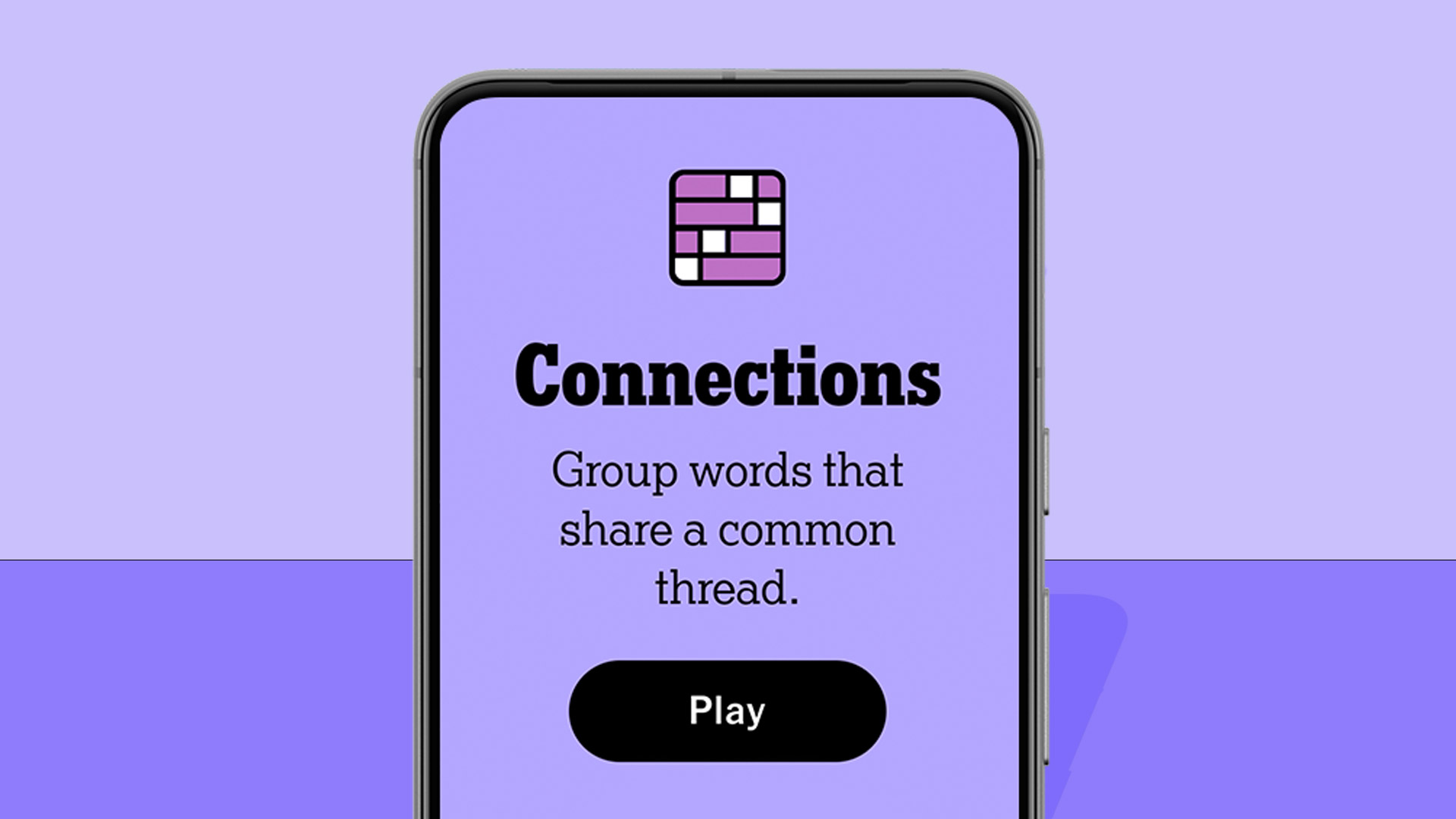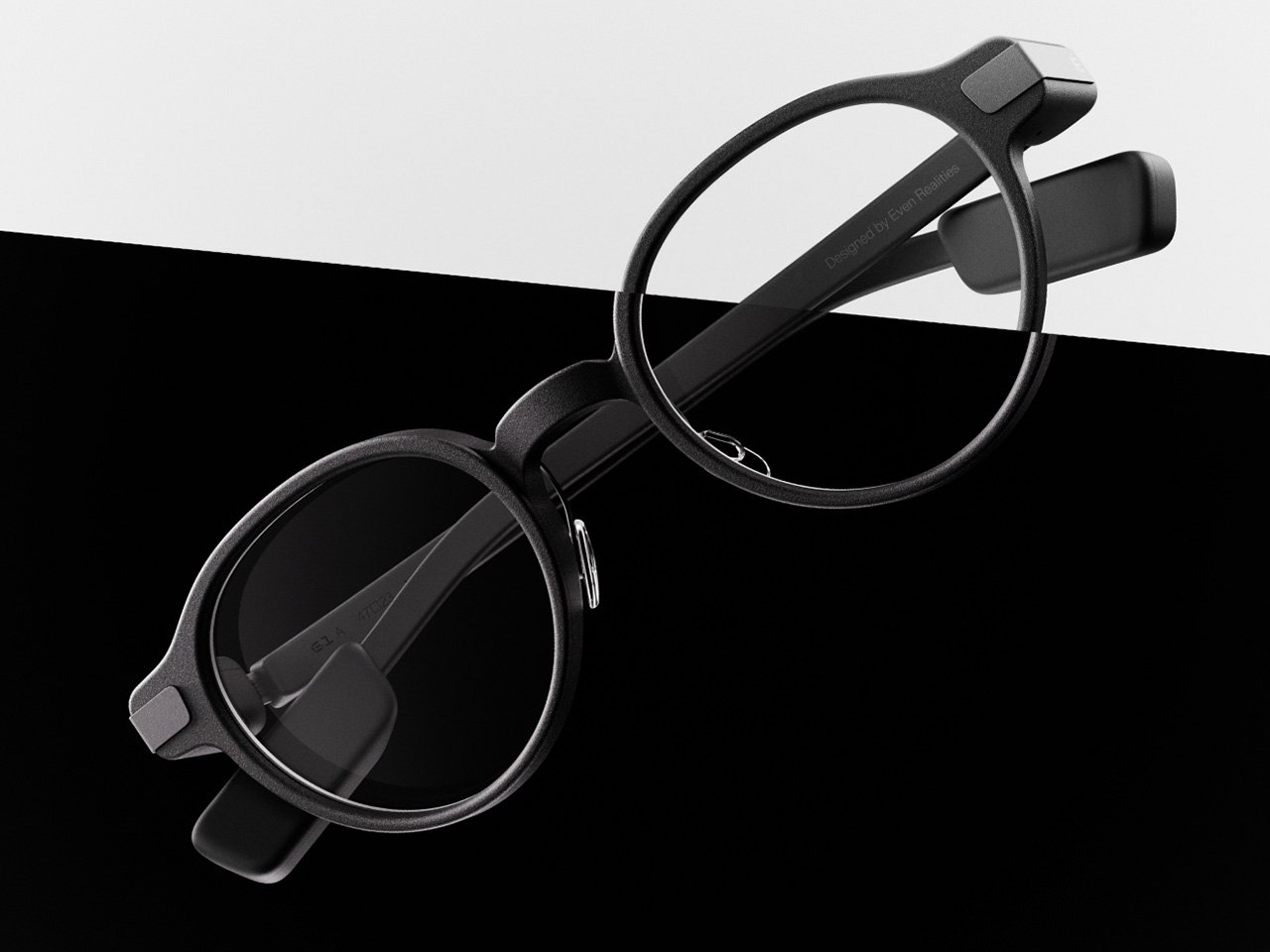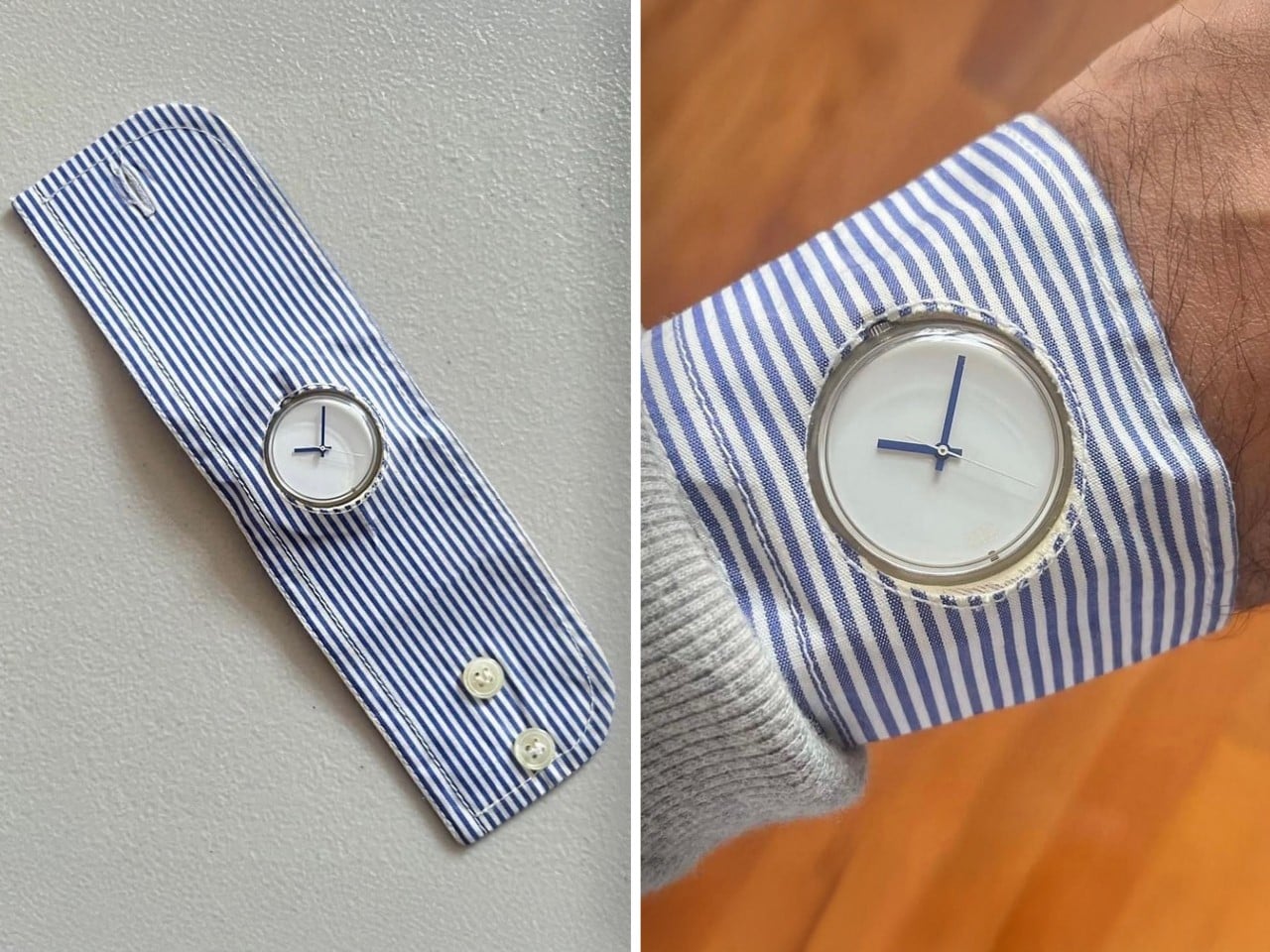www.yankodesign.com
Its been more than a decade since Google Glass. Remember that godawful device?! It was promising, but led nowhere as Google shuttered the project soon after. In the following years we got VR, AR, MR, XR, and Spatial Computing, but the idea of a pair of smart glasses that had in-built displays it still is something big tech couldnt crack. Yes, you can buy a $300 clunky VR headset to play Beat Saber. Or you could buy Metas Ray-Bans that click photos or play music but the dream of a truly advanced pair of smart glasses still remained unrealized until the folks at Even Realities pulled back the curtain to reveal their G1 glasses.Designed to look like regular sunglasses, the Even G1 packs an impressive set of features without the usual compromises. They use waveguide technology to project a crisp, full-color display onto the lenses, keeping the digital interface unobtrusive when not in use. Unlike bulkier alternatives, they dont rely on an external phone screen or a massive headset to function. The frames house a Snapdragon processor, built-in speakers, and cameras, yet remain sleek enough to wear comfortably throughout the day. This balance between performance and discretion is what other companies have struggled to achieve.Designer: Even RealitiesClick Here to Buy Now: $599.I cant stress enough how impressive it is that the G1 looks like your everyday pair of fashionable sunglasses, with none of the clunky, tech-heavy aesthetics that have plagued earlier smart glasses. Theres no awkward bulk around the temples, no oversized frames that scream prototype. Instead, Even Realities has crafted something that blends in, making augmented reality feel natural rather than forced. The key to this is the use of waveguide display technology, which allows digital overlays to appear crisp and unobtrusive. Whether youre navigating city streets, glancing at notifications, or following step-by-step instructions, the information stays subtle yet readable.A green monochrome Micro-OLED panel lives inside the lenses, invisible to anyone else. Look straight ahead, and its as if youre wearing standard blue-light-blocking glasses. Tilt your head slightly, though, and a dashboard materializesa clean, unobtrusive overlay showing the time, temperature, notifications, and even a mini-map of your current location. Its crisp, clear, and surprisingly natural, like glancing at a road sign rather than staring at a screen.Notifications appear in real-time, floating briefly in front of you before fading away. Calls, texts, app alertsits all there, but in a way that respects your attention rather than demanding it. Theres no way to reply from the glasses, no voice dictation or awkward tapping on virtual buttons. Its a one-way street: information flows in, but action still happens on your phone.And thats really what these smart glasses are about giving you important updates without the screen time and the unavoidable gravitation towards your phone and its social media apps that absolutely waste your time. Remember pagers? Think of these glasses as having invisible pager displays built into their eyepieces. Without pulling out a phone, you can see messages, reminders, or navigation prompts floating in your field of vision. Picture yourself walking through a crowded airport, luggage in hand, and instead of fumbling with your phone, your gate number and boarding time appear right in front of you. For cyclists, this means seeing speed and turn-by-turn navigation without taking their eyes off the road.Navigation really does feel like a glimpse of the future. Set a destination in the app, and the glasses overlay turn-by-turn walking or biking directions onto the real world. No need to glance down at a phone or fumble with a smartwatchyour next turn just exists in front of you. The green monochrome visuals keep it simple, making it feel more like an enhanced awareness of your surroundings than an extra layer of digital clutter.Then there are the features that sneak up on you, the ones that start as novelties but quickly become essentials. A built-in AI assistantpowered by Perplexity or ChatGPTgives quick answers to questions, displayed right in your lenses. A teleprompter mode lets you load scripts into the glasses, adjusting the text speed based on how fast youre speaking. Content creators and public speakers might find this borderline magical. And for anyone navigating a foreign country, real-time translation converts spoken language into readable text, quietly bridging communication gaps without pulling out a phone.The G1 also supports voice control and gesture-based interactions, cutting down on the need for constant manual input. It syncs with both iOS and Android devices, ensuring broad compatibilitysomething that many competing smart glasses struggle with. The real magic, though, lies in its ability to balance augmented reality with real-world awareness. Unlike bulkier AR headsets that immerse users in digital overlays, the G1 keeps the experience light, ensuring that real-life interactions arent disrupted. This makes it ideal for both productivity and casual use, whether youre answering a quick text, glancing at a to-do list, or getting directions while exploring a new city.Battery life holds its own, lasting about a day and a half per charge. The included case stretches that to nearly a week, meaning you wont be scrambling for a charger every night. Connectivity is strictly Bluetooth, so these glasses always rely on your phone, but that keeps things simple. No extra SIM cards, no data plansjust a clean link between the G1 and your existing setup.The build is a win. Magnesium and aluminum make for a frame that feels premium without unnecessary weight, clocking in at just under 40 grams. Thats heavier than standard glasses but lighter than Metas Ray-Bans, and after a few hours, they just feel like, well, glasses. No pressure points, no constant reminder that theres tech strapped to your face. Most of the hardware tucks behind your ears, keeping the whole thing looking effortlessly normal. And if you want to upgrade from the regular lenses to something tinted for the outdoors, Even Realities sells clip-on tinted lenses as accessories for your G1.With Valentines Day around the corner, Even Realities is running a discount on the G1, positioning it as an unconventional but intriguing gift. While traditional gifts lean toward jewelry, chocolates, or romantic getaways, the G1 offers something differenta way to stay connected without constant screen time. Imagine walking through a new city with your partner, receiving quiet, unobtrusive directions as you explore together. Or capturing candid moments with the discreet built-in camera, storing memories without pulling out a phone. Its not a classic Valentines gesture, but it fits into the modern dynamic of staying present while still engaging with technology in meaningful ways.What makes the G1 particularly compelling is how it sidesteps the pitfalls that have held back other AR glasses. Google Glass tried to be a wearable assistant but suffered from privacy concerns and an awkward design. Metas AR efforts have leaned into social and entertainment use cases, but theyve struggled to balance form and function. The G1 doesnt try to do everythingit focuses on practical, everyday applications that enhance the users life rather than replace reality with digital clutter. No cameras to spy on you, speakers to distract you, or AI assistants to disappoint you with their shortfalls the G1 knows exactly what its good for and performs as intended.Even Realities has managed to achieve what larger companies have struggled withan elegant, consumer-friendly pair of smart glasses that feel practical rather than experimental. The G1 doesnt force users into an overcomplicated AR world; it enhances real life in subtle, thoughtful ways. Whether its for productivity, navigation, or simply reducing the need to constantly check a phone, the G1 presents a version of smart eyewear that feels futuristic yet fashionable, and most importantly, useful.Click Here to Buy Now: $599.The post Even Realities G1: The Fashionable Futuristic Smart Glasses That Google & Meta Wished They Made first appeared on Yanko Design.












